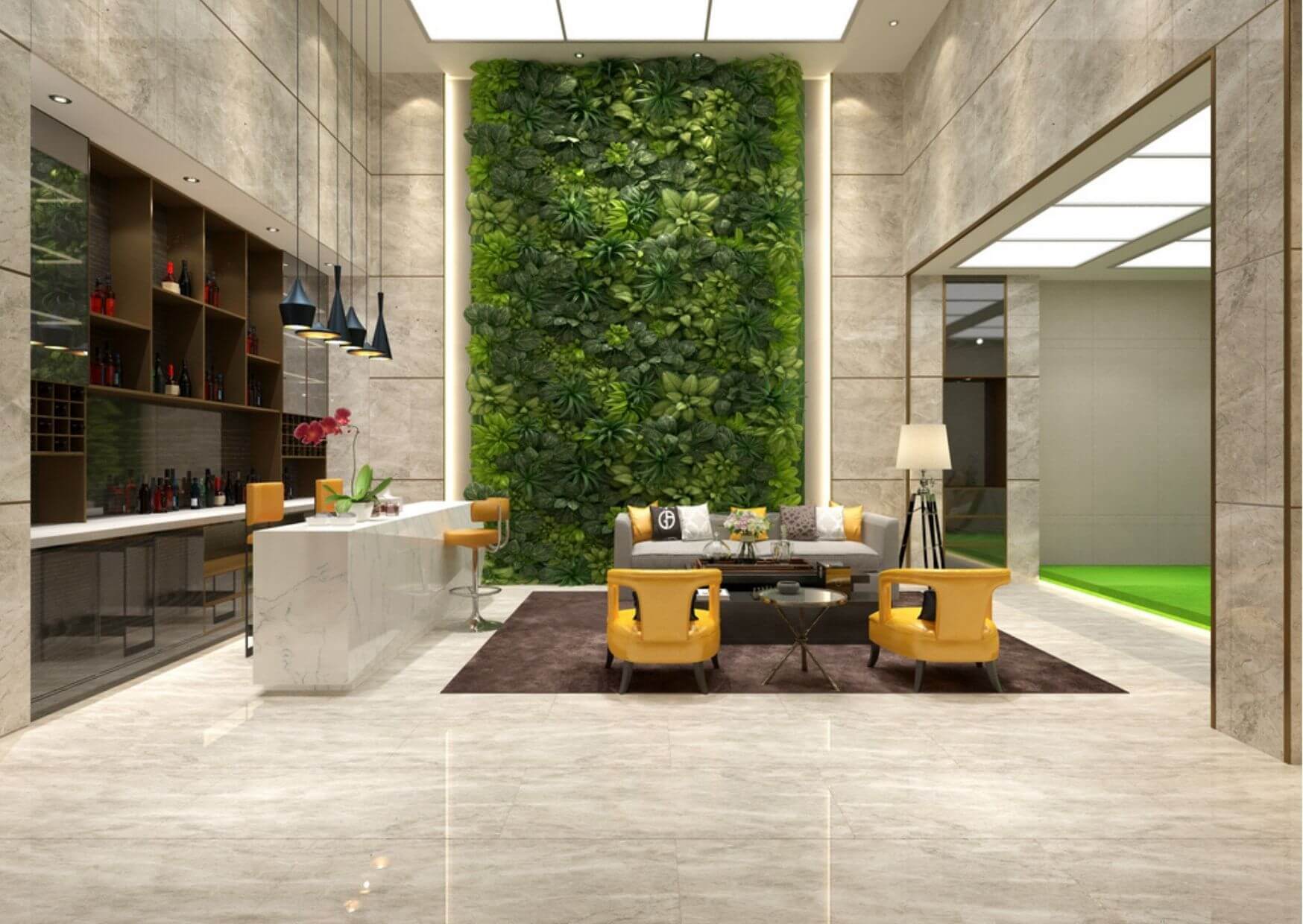
The Benefits of Biophilic Design in the Hospitality Industry
[column width=”1/1″ last=”true” title=”” title_type=”single” animation=”none” implicit=”true”]
Contemporary architecture places human health, well-being and satisfaction in the centre. Biophilic design is an innovative creation philosophy that brings nature back to close surroundings and is a trend in shaping space that has been going on for several years. According to the concept of biophilic design, the building should be an extension of the natural landscape. Studies show that introducing these principles to hotel interiors reduces the stress level of guests, improving their creativity and well-being. To meet the expectations of new generations of travellers with evolving preferences, hospitality experts more often implement the principles of biophilia into hotel design architecture plans.
Benefits of Biophilic Design
Modern science has a significant impact on utility design and architecture. The American NASA agency researched the ability of plants to purify the air and the practical use of natural phenomena. The World Health Organization has published reports on the importance of clean air for human health and life. These and many other studies helped systematize information. Discoveries indicated many benefits resulting in using biophilic design in hospitality spaces. Biophilic design improves people’s productivity, creativity and well-being, increases concentration, and reduce attention disorders such as ADHD among children and adults. It is worth considering designing and renovating the hotel following the idea of biophilic design because customers appreciate the benefits, are more willing to pay for rooms arranged with greenery, and employees are more efficient if the workplace offers high comfort.
Other benefits of implementing the principles of biophilic design in arranging hotel interiors include:
- The optimal level of thermal comfort – normalized room temperature.
- High air quality in the hotel, proper ventilation of the rooms and low level of pollution.
- Protection against harmful noise from the outside because of soundproof interiors.
- Maximum access of daylight to the rooms. Design of open spaces and glazing.
- Promotion of recycling, local construction contractors, and local materials. Sustainable use of raw materials suitable for the manufacturing of furniture and equipment.
- Installation of natural building and finishing materials.
- Colour palette inspired by the shades of nature present in hotel spaces.
- Natural light and organic forms.
- Relaxation zones. Places of rest in public spaces, conducive to an atmosphere of quick regeneration and relaxation surrounded by greenery.
- Design and renovation of hotel interiors adequate to the needs of hotel guests.
- Increased effort of construction companies and catering equipment manufacturers for environmentally friendly development.
- Conscious use of the psychological effect of green architecture.
Implementation of Biophilic Design in Hotel Interiors
Currently, hoteliers are looking for new and distinctive ways to incorporate concepts of biophilic design into hotel interior design to improve their ratings. Therefore, hotel designers arrange spaces using plants, living walls, vertical gardens, glass, natural lighting, wood and stone to blur the boundaries between internal and external areas. As a result, hotels create biophilic enclaves with carefully selected custom-made furniture and décor that provide guests with a sense of relaxation. Incorporating a biophilic design when remodeling a hotel lobby will provide guests with all of the biophilic benefits and is a great way to make a unique first impression. To easily enhance this effect, place several biophilic elements close to each other. Even simply placing a plant next to a wooden wall might be noticeable and influence people’s mood and behaviour. Thanks to that, you can create a visual connection with nature. The more natural elements you implement, the happier and more relaxed your guests will feel, which will result in a positive experience.
Improving Hotel Guest Experience
Studies show that biophilic design not only increases the likelihood of a unique and unforgettable experience for your guests, but satisfied customers are twice as likely to give a positive opinion after their stay, specifically underlining the word “experience”. The biophilic design relieves the stress of urban surroundings, noise or travel complications. Emerging scientific evidence suggests that 36% more guests prefer to spend their time in biophilic hotel spaces than hotels without these architectural features. Today, biophilic design is a significant part of building an immersive guest experience, and hotels have a lot to gain from investing in remodeling projects.
[/column]
